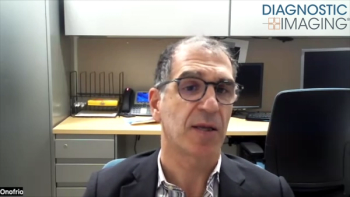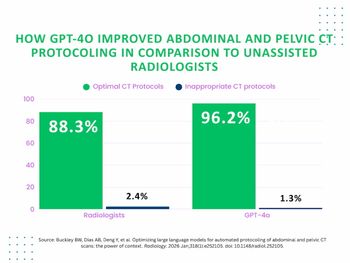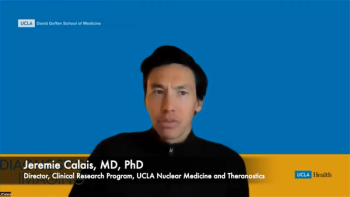
GE's InSite improves user service
Remote scanner diagnostics allow GE to offer its imaging customersservices beyond maintenance troubleshooting. Implementation ofits InSite remote diagnostics program has also improved user educationand training, said John R. Haddock, vice president and
Remote scanner diagnostics allow GE to offer its imaging customersservices beyond maintenance troubleshooting. Implementation ofits InSite remote diagnostics program has also improved user educationand training, said John R. Haddock, vice president and generalmanager of marketing and engineering for GE Medical Systems.
Transmission of image data and remote monitoring of consolekeystrokes enables the vendor to guide technologists in determiningoptimal operation of their imaging systems, he said.
Users will call the manufacturer when they are not satisfiedwith image quality. With an engineer on-line through InSite, GEcan read error codes in the scanner to determine what technicaladjustments in the system are required. The engineer can alsoprovide other advice, such as the use of different pulse sequencesin MRI, to improve the image.
"This not only gives the technologist the needed help,but saves the trouble of a service call," Haddock said.
If a field service call is required, the remote engineer caninitiate the diagnosis and service process and expedite matterswhen the field engineer arrives, he said.
GE has expanded InSite to include servicing of its high-endAdvantx x-ray systems as well as the new 0.5-tesla Signa MRI systemand CT HiSpeed Advantage scanner introduced at the RadiologicalSociety of North America conference last month.
InSite was originally available for use with GE's 1.5-teslaSigna MRI, 9800 CT, CT HiLight Advantage, and Star nuclear medicinesystems. This remote diagnostic capability has given the vendora leg up on competitors, Haddock said.
"It is a big advantage. Unlike some of the competitionwho can't run diagnostic routines until they are on the site andhaul out a laptop (computer), we can be doing that while the serviceengineer is en route," he said.
BRIEFLY NOTED:
- Maxum Health of Dallas moved this month to further diversifyits imaging services business--and take advantage of safe-harbor-inducedcenter acquisition opportunities. Maxum, predominantly a supplierof mobile MRI services, purchased the North Dallas DiagnosticCenter, a multimodality imaging center.
The former mobile imaging subsidiary of Voluntary Hospitalsof America was spun off from VHA over two years ago. Maxum hasfinancial backing from Merrill Lynch and raised $17 million throughan initial public stock offering in September (SCAN 10/23/91).The firm now has three freestanding imaging centers in operationand two more under development.
"By purchasing the center from physician owners, the facilitywill be in full compliance with all of the new fraud and abusesafe harbor regulations. We believe other opportunities will beavailable in areas where we are presently operating," saidWilliam L. MacNight, chairman and CEO.
Newsletter
Stay at the forefront of radiology with the Diagnostic Imaging newsletter, delivering the latest news, clinical insights, and imaging advancements for today’s radiologists.




























